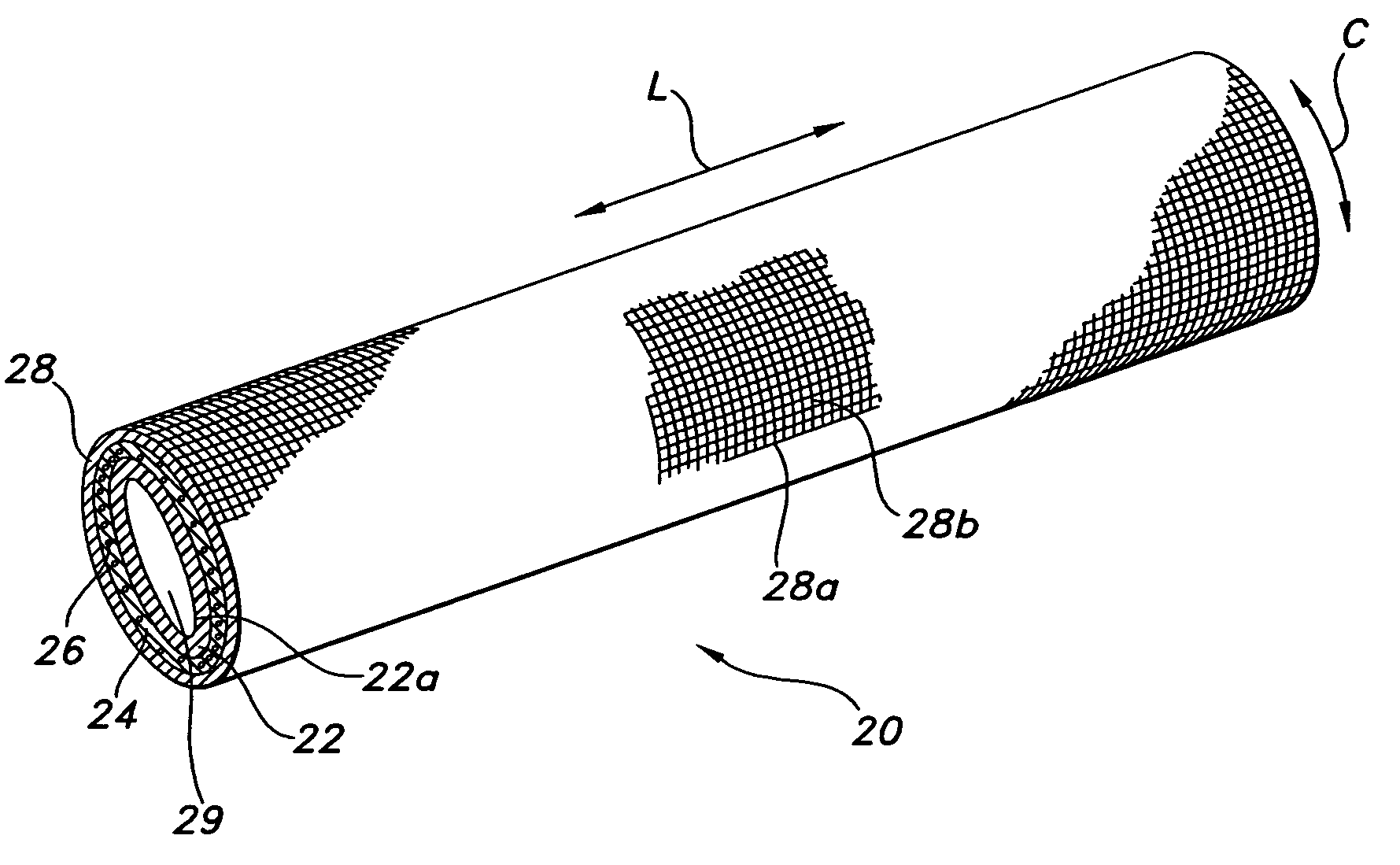Implantable medical devices with antimicrobial and biodegradable matrices
a technology of biodegradable matrices and medical devices, applied in the field of implantable medical devices, can solve the problems of high mortality rate, hemodialysis requirement, poor glycemic control, etc., and achieve the effects of preventing the formation of initial bacterial biofilm, encouraging tissue growth, and preventing the formation of biofilm
- Summary
- Abstract
- Description
- Claims
- Application Information
AI Technical Summary
Benefits of technology
Problems solved by technology
Method used
Image
Examples
example 1
[0070] The composite device of the present invention is formed by expanding a thin wall PTFE inner luminal tube at a degree of elongation on the order of 600-900%. The inner luminal tube is expanded over a cylindrical stainless steel mandrel at a temperature of 500° F. The luminal tube is fully sintered after expansion at a temperature of 660° F. for 15 minutes. The resulting luminal tube formed by this method exhibits an IND of greater than 40 microns, and in particular between 70 and 90 microns, and is spanned by a moderate number of fibrils.
[0071] The combination of the luminal ePTFE tube over the mandrel is then employed as a substrate over which the biodegradable layer is disposed. In particular, the biodegradable layer is formed of a synthetic hydrogel polymer. The hydrogel is a water-insoluble copolymer having a hydrophilic region, at least two functional groups that will allow for cross-linking of the polymer chains and a bioresorbable hydrophobic region. Silver iodate is b...
PUM
| Property | Measurement | Unit |
|---|---|---|
| internodal distance | aaaaa | aaaaa |
| internodal distance | aaaaa | aaaaa |
| time | aaaaa | aaaaa |
Abstract
Description
Claims
Application Information
 Login to View More
Login to View More - R&D
- Intellectual Property
- Life Sciences
- Materials
- Tech Scout
- Unparalleled Data Quality
- Higher Quality Content
- 60% Fewer Hallucinations
Browse by: Latest US Patents, China's latest patents, Technical Efficacy Thesaurus, Application Domain, Technology Topic, Popular Technical Reports.
© 2025 PatSnap. All rights reserved.Legal|Privacy policy|Modern Slavery Act Transparency Statement|Sitemap|About US| Contact US: help@patsnap.com



